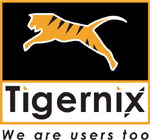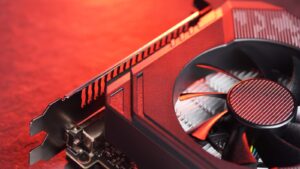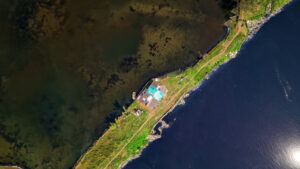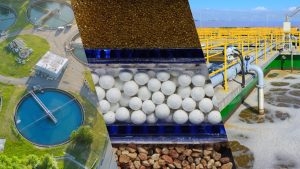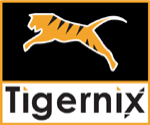It is quite visible that the water industry is getting shifted into a major digital transformation, with 78% of water utilities having implemented some form of digital transformation initiatives.
Gone are the days when the state governments, water utilities, and municipalities around the world relied on old-age water management methods. It is no exception for Australia.
No more reliance on manual inspections and struggling with isolated data. Now the whole industry in Australia is transforming into a realm where traditionalism is replaced by smart water asset software integrated with IIoT water asset integration (Industrial Internet of Things) solutions.
This integration brings the water utilities into a next-level service ecosystem with the capacity to monitor infrastructure in real-time, improve operational efficiency, and make informed decisions that scale up sustainability.
In this article, we dive deep into the way IIoT water asset integration works, the benefits it offers to water utilities, and how, ultimately, the smart water asset platforms mimic real transformation.
We will look into
- Why IIoT Integration Is Reshaping Modern Water Utilities
- What Is Smart Water Asset Software?
- How IIoT Integration Works in Utility Environments
- Key Benefits of Integrating IIoT with Water Asset Systems
- Overcoming Common Integration Challenges
- Cybersecurity and Data Governance in IIoT Asset Networks
- Real-World Case Studies: IIoT-Enabled Utility Success
- Future of Digital Water Solutions
Why IIoT Integration Is Reshaping Modern Water Utilities

From Manual Monitoring to Real-Time Insights
The time has passed when water utilities carried out scheduled inspections and manual readings when they were in need of monitoring pipelines, inspecting the treatment plant, and reservoirs.
The problem with those methods is that they are significantly slow. Plus, most of them are prone to human error, and they do not have proper protocols to detect leaks or ageing infrastructure in time.
With the emergence of IoT water utility management, many water plants are interested in installing robust sensors on pipelines and pumps as they provide real-time data on various factors such as pressure and flow rates.
Not to mention, it greatly aids in tracking water quality.
Due to this potential, your water utility’s asset managers in Australia are able to detect anomalies instantly instead of waiting for the next inspection. When you integrate this data into smart water asset software, your water utility gets the power to act proactively, while decreasing downtime and reducing costs.
The Growing Demand for Data-Driven Water Management
We can all see that urban populations are rising day after day. Due to the constant water demand, the ageing infrastructure is under pressure, and as an obvious part of that, regulatory compliance demands are skyrocketing.
Is your water utility now in need of data-driven insights when optimising your operations?
At one point or another, you may need them to extend asset lifecycle and allocate resources efficiently, right?
Predictive analytics for utilities enters the picture as the major player here. It can analyse historical and real-time data, and with such wisdom, utilities can forecast potential failures easily. It will help you to plan maintenance schedules and select your necessary investments.
It is indeed a shift toward digital water solutions, and the latter ensures your utility’s water systems are sustainable, resilient, and better prepared for the next decades.
How Smart Asset Software Enables Resilient Infrastructure
Smart water asset software simply links with your central platform when managing asset conditions throughout their lifecycle. As it integrates data from scattered IoT sensors, asset databases, and GIS mapping, your water utility can earn a comprehensive view of water supply networks and asset performance.
Let’s take an example: these predictive models come with the ability to identify pipeline segments at risk of failure, and they switch on to preventive maintenance mode before serious leaks occur.
This is a robust approach that not only reduces operational costs but also backs up your capital planning alongside regulatory compliance in Australia.
What Is Smart Water Asset Software?

Core Functions and Data-Driven Decision Capabilities
The prime focus of designing smart water asset software is to easily streamline workflows, consolidate data, and take away the burden from decision-making. It supports water utilities to keep track of various asset conditions.
The system can look into your utility’s work order management and keep monitoring operational efficiencies, all under a singular dashboard.
This data-driven strategy is what encourages water utilities to improve decision-making, as it offers some actionable insights and brings down the reliance levels on reactive maintenance.
In the end, this levels up overall operational efficiency.
Linking IoT Sensors, GIS, and Asset Databases
Integration with sensor-enabled asset monitoring is what actually enables the software to collect data continuously. When it comes to data, it just ranges from flow and pressure to tracking water quality and machinery health.
Since it gets linked with GIS mapping, you can visualise this data geographically. Not to say that this feature helps asset managers mark issues in specific locations.
Utility asset management software is where it stores maintenance records, historical performance data, and asset lifecycle information.
When merged, this ecosystem opens the doors for you to have real-time insights that lay the basis for effective water asset management.
Role of Predictive Analytics for Utilities in Proactive Maintenance
Predictive analytics for utilities is a technological pinnacle that employs advanced algorithms in order to detect leaks, forecast failures, and make the maintenance schedules perfect.
For instance, Utilities have the opportunity to spot the potential for pipe bursts and then move to prevent service interruptions strategically when it is possible to look into flow rates, pressure fluctuations, and historical repair data all together.
This approach is an outstanding way to extend asset lifespan and eliminate unnecessary operational costs as it supports wastewater treatment efficiency.
Not to forget that the latter supports reducing unplanned downtime and promising a reliable water supply.
How IIoT Integration Works in Utility Environments

Step-by-Step IIoT Deployment and Data Flow Process
Internet of Things IIoT integration starts at the point where the operators install sensors across water networks. Those sensor installation points can vary from pumping stations to distribution lines.
These devices come with the potential to continuously collect data on dynamic water factors like pressure and water flow.
Then the system sends the collected data to the central smart water asset software, and that is where it is further processed and deeply analysed.
Edge computing devices can pave the way for immediate calculations locally, while cloud systems keep the larger datasets stored and analysed. Finally, it offers real-time water infrastructure insights.
Sensor Selection, Calibration, and Connectivity Methods
No matter what effort you put in manually, everything depends on choosing the right sensor type. You must receive data all the way from pressure sensors, flow meters, and water quality monitors, and they must be calibrated for accuracy.
With wireless connectivity options, such as NB-IoT, LoRaWAN, or LTE-M, your system can ensure reliable communication even in remote areas.
This is why proper integration receives a top spot on the priority list. It guarantees that sensor-enabled asset monitoring delivers consistent, actionable data for your water utility’s asset managers to be able to track operations and detect leaks early.
Edge Computing and Cloud Computing for Scalable Water Operations
Edge computing backs up the processing of data close to the sensor. Be it sudden pressure drops or contamination risks, the latter clears the way for immediate response to anomalies.
Cloud computing has the power to aggregate data from multiple sites, also it can provide a holistic view of the water network and switch the mode to advanced analytics.
This combination removes the blockages from your utility when managing ageing infrastructure efficiently, scaling operations, and implementing predictive maintenance strategies that extend asset performance.
Key Benefits of Integrating IIoT with Water Asset Systems
Early Leak Detection and Reduced Non-Revenue Water
With IIoT water asset integration, the sensors that have been installed can detect leaks within hours. This way, your asset managers do not have to wait weeks or months.
Since you receive prompt identification power, you get the chance to improve service reliability, reduce water loss, and cut costs for emergency repairs.
Since timely interventions and strengthening system integrity are possible, this acts as a wise approach and also strengthens water asset management.
Maximised Asset Lifespan through Predictive Maintenance
Did you know that you can leverage predictive maintenance that is based on sensor data to avoid service failures?
Since there is no space for reactive repairs, water utilities can extend the life of pipes, pumps, and all assets in the treatment plant. Not to mention that this shoots the overall asset performance up in the sky.
Operational Transparency and Improved Decision-Making
You receive data through centralised dashboards, which provide real-time insights into water dynamic aspects. It can be about asset conditions, water networks, and maintenance activities.
This level of transparency strengthens water asset managers to arrive at informed decisions while keeping the operational transparency at the top.
Enhanced Sustainability and Community Trust
Efficient water management is a synonym for the mechanism of lowering energy consumption, reducing waste, and promising a reliable water supply for communities.
This is where the concept of digital water solutions comes into play, giving the utilities the potential to demonstrate commitment to sustainability. In one way, it strengthens public trust, and in another way, it adheres to regulatory compliance.
Overcoming Common Integration Challenges
Interoperability with Legacy SCADA and Asset Systems
As we have noticed, many water utilities still keep operating older SCADA systems alongside newer digital platforms. Are you one of them?
It is not easy to ensure smooth integration in this context, as it certainly seeks middleware solutions, compatible protocols, and careful planning to prevent data breaches.
Ensuring Data Accuracy and Connectivity Reliability
There can be many reasons that affect data accuracy. It may be a communication failure or a sensor drift; if not, it can be an environmental condition.
It is indeed challenging to maintain a reliable real-time data stream as it requires redundant systems, regular calibration, and robust connectivity protocols.
Building Internal Skill Sets for Data-Centric Operations
Many water utility authorities ignore the fact that implementing IIoT water asset integration and utility asset management software needs a team of skilled personnel.
If you expect to achieve long-term success, it is a must to train teams to operate dashboards, interpret data analytics, and perform predictive maintenance correctly.
Cybersecurity and Data Governance in IIoT Asset Networks
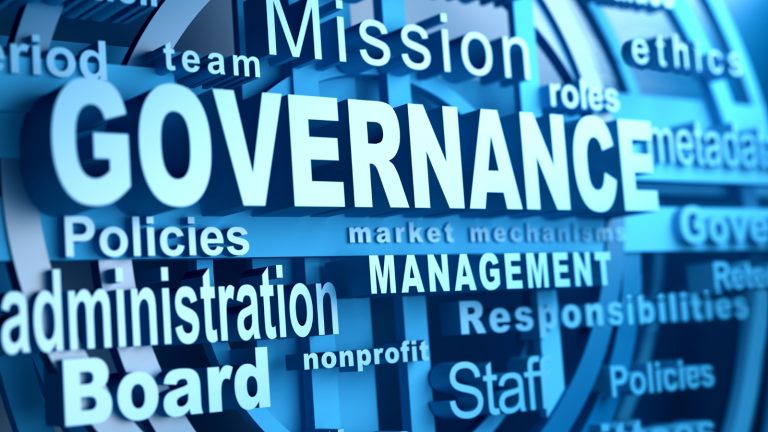
Protecting Sensor Networks from Cyber Threats
As we have witnessed recently, IoT-enabled water utility systems seem to be high on their vulnerability to cyber attacks. This is where your devices need protection in every aspect through firewalls, communication, and even intrusion detection.
Encryption, Access Control, and Regulatory Compliance Standards
- Your water-related data needs strong encryption in transit and at rest.
- Go with role-based access as it ensures only authorised personnel can modify or view sensitive information.
- Focus on maintaining regulatory compliance.
Establishing Continuous Monitoring and Risk Management Protocols
When you focus on continuously monitoring the water network activity, you have to keep it combined with risk assessment protocols. This way, the water utility can spot potential threats early to stay away from operational disruptions.
Real-World Case Studies: IIoT-Enabled Utility Success
Gandia, Spain – Digital Transformation of Water
Gandia has reportedly used IoT sensors, digital twins, and flow meters in order to detect leaks, optimise distribution, and improve water service reliability across the city and has witnessed significant progress.
Veolia, Global – Predictive Maintenance via IIoT
Veolia implemented IIoT gateways at treatment plants and pumping stations to monitor equipment, and this has enabled predictive maintenance successfully and decreased unplanned downtime.
Urban Water Networks, Study – Leak Detection with Hydrophones
A study published in Water Resources Management describes how acoustic sensors combined with machine learning in city water networks accurately detected leaks. It has scaled up operational efficiency and minimised false alarms considerably.
IoT-Based Smart Water Distribution, Research Project, India
One academic case study demonstrates how sensor networks monitored flow and leaks, sending real-time alerts to control centres and isolating leak zones to reduce water loss efficiently.
Future of Digital Water Solutions
AI and Machine Learning for Intelligent Water Forecasting
AI models have the power to make accurate predictions of demand patterns and detect potential failures. Upon that knowledge, it can suggest maintenance schedules.
This is useful for asset managers when planning operations more accurately and uninterrupted service delivery.
Digital Twins Ecosystems Connecting Physical and Virtual Assets
Digital twin is developed to replicate physical assets virtually, and this strength helps simulations and scenario planning.
Utilities can use this capability to assess risk, test interventions, and optimise network performance without even touching real-world operations.
Autonomous Decision Support for Next-Generation Water Utilities
The fusion of AI, IoT, and advanced analytics opens the door for autonomous water systems, and this acts as a helping hand for your water utility to fully manage the treatment plant with minimal human intervention.
Why Choose Tigernix Smart Water Asset Software for IIoT Integration?
Proven Interoperability with Legacy and Modern Systems
Tigernix Smart Water Asset solution stands out in the competitive market in Australia as our solutions integrate seamlessly with your existing SCADA systems and other modern digital platforms.
Tigernix solutions can 100% guarantee a smooth transition without disrupting your water utility operations in Australia.
Modular Platform Combining IoT, GIS, and AI Analytics
Tigernix software helps utilities to scale modules according to their specific needs. Whether it is GIS mapping, combining sensor data, or enabling predictive analytics, all are possible under one platform for comprehensive water asset management.
Trusted by Water Utilities for Compliance, Uptime, and Scalability
It is a great opportunity for water utilities in Australia to rely on Tigernix as they expect to maintain their operational efficiency, easing regulatory compliance, and high system uptime altogether.
Tigernix is a reliable partner for IIoT water asset integration.
Ready to Build a Smarter, Data-Driven Water Utility?
Book a Live Demo of Tigernix Smart Water Asset Software
If you are still hesitant to walk on the digital path, you have the chance to experience firsthand how integrated IIoT and smart water asset software move forward to optimise operations and extend your asset performance. Call for a free demo session.
Explore IIoT Deployment Strategies Tailored to Your Assets with Tigernix.
